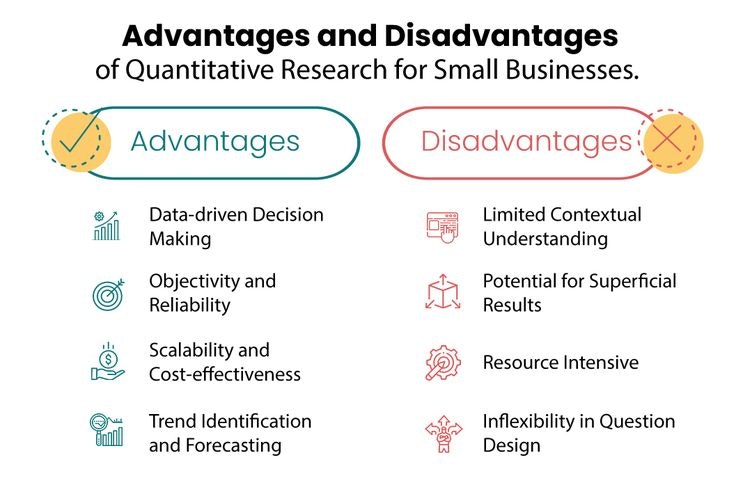Ever wonder why user research is inevitable in UX design?
Well, it’s simple. It’s the magic wand that transforms good designs into great experiences. But here’s the kicker: if it's not done the right way, it’s as good as tossing your budget into a bonfire. Yep, you heard it right. User research needs to be spot on, or else it’s just a costly adventure with no treasure at the end.
But the big question is, what happens if this crucial step isn't properly done? The consequences maybe far more serious than you ever imagined.
Consequences of Improper User Research
At Adam Fard, from working with startups and established ventures from all around the world, here are 3 common consequences of not conducting proper user research:
Financial risks: Lack of user research could reduce the initial cost of your UX design, however the long-term financial impact of products that don't satisfy customers could be significant. Imagine spending resources to create a product, only to discover that it isn't able to meet the needs of users or solve the problems you want to address, which could result in expensive updates and redesigns.
Reputational damage In this modern age of technology, negative user experience can result in negative reviews and low user ratings that can be spread quickly across social media as well as other platforms. This can not only impact sales in the present, but it can also damage your brand's image, possibly hindering the acquisition of potential customers.
Missed opportunities If you're not doing thorough research on your users it's like in a blind spot. This could result in missed opportunities in the market since the product could not match the needs and needs of your intended customers.
It's not only about avoiding these traps but also creating the conditions for an experience that is truly memorable and will be a hit with the users. By knowing and responding to their needs and desires, you can direct your initiatives towards not only surpassing but exceeding the expectations of the users to ensure both satisfaction of the user as well as successful business results.

The Challenges and Importance of User Interviews
Navigating the Challenges
Conducting user interviews might sound simple, but several hurdles can make it a bit tricky. Let's examine some of the common challenges you may encounter:
Finding Willing Participants: One of the first major roadblocks is recruiting users who are willing and able to participate in interviews. It's not just about finding any user; it's about finding the right users who are reflective of your target audience. This task can be time-consuming and challenging, especially when you're looking for a diverse group of participants to provide a wide range of insights.
Scheduling and Logistics: Once you have participants lined up, coordinating schedules is the next challenge. If your users are spread across different time zones or have hectic schedules, finding a common time that works for everyone can be like solving a complex puzzle. This logistical nightmare requires flexibility and patience.
Ensuring Representativeness: Even after overcoming recruitment and scheduling hurdles, there's the challenge of ensuring that your participants accurately represent your entire user base. This is crucial for gathering meaningful insights, but achieving this representative sample can be difficult, especially for products with a broad or diverse audience.
Uncovering the Importance of User Interview
Despite these challenges, the benefits of conducting thorough user interviews are invaluable:
Gaining Deep Insights: User interviews are a goldmine for uncovering deep insights that surveys and analytics tools just can't capture. Through direct conversations, you can explore the nuances of user behavior, understand their motivations, and get honest feedback that is often lost in more impersonal research methods.
Building Empathy: Talking directly with users allows design teams to build empathy. Hearing firsthand about the users' experiences, challenges, and needs helps the team to connect on a human level, which can inspire more thoughtful and user-centred design decisions.
Validating Product Concepts: User interviews provide a unique opportunity to test and refine product concepts before they go to market. By engaging with users directly, you can validate assumptions, gauge reactions to prototypes, and make necessary adjustments based on actual user feedback. This step is crucial for ensuring that the final product truly meets the needs and expectations of its intended users.
Through these interviews, teams can transform challenges into opportunities, directly influencing the design and development process in a way that aligns closely with user expectations and needs. Each interview becomes a stepping stone towards a more intuitive and user-friendly product.
Best Practices for Conducting Effective User Interviews
How to Thoroughly Prepare for a User Interview
Successful user interviews begin long before the actual conversation. Preparation and execution is key:
Develop a Clear Guide: Craft a set of clear, open-ended questions that encourage users to provide detailed and expansive answers. Avoid yes or no questions, aiming instead for those that prompt stories and explanations.
Research the Participant: Understand who you're talking to. Tailor your questions to fit the background and experiences of each participant, which shows respect and can elicit more useful responses.
Choose the Right Space: Whether in-person or virtual, ensure the environment is relaxed and distraction-free. This could mean a quiet room or a well-set-up video call where both parties can speak freely without external interruptions.
Encourage Open Communication: Start with light, non-invasive questions to build rapport. Make it clear that there are no wrong answers, and you're there to learn from them.
Consent is Key: Always get permission before recording. Explain how the recording will be used and ensure confidentiality and privacy.
Detailed Review: Recordings allow you to catch non-verbal cues or subtleties you might miss during the live conversation. They also enable a more thorough analysis later, ensuring you don’t miss out on any insights.
Pro Tip:
Utilize Technology: Employ innovative tools for recording and note-taking like Notion can help streamline the process. For virtual interviews, ensure your technology setup is capable of capturing high-quality audio and video. AI note-taking and meeting summary tools like Fireflies can be lifesavers.
By following these best practices, you can enhance the effectiveness of your user interviews, leading to richer data and more insightful outcomes. This thorough approach not only improves the interview process itself but also the quality of the insights gathered, driving better-informed design and development decisions.
Leveraging User Research for UX Design
8 Ways to Incorporate Feedback into UX Design Practice
Incorporating user-generated insights in UX design and UX designing process is vital to creating a product that is a hit with users. Here are some pro tips that'll help you enhance your product design with the feedback you've gathered.
Data-driven Decisions: Use the data gathered from user surveys and tests to guide your design decisions. This could mean adjusting features, changing interfaces as well as reassessing user flow in light of what users require and the value they attach to.
Develop User Personas Create detailed user personas using the data from your research. The personas you create should reflect the preferences, characteristics and behaviour of your target users. They should also serve as a reference for the design of solutions based on user needs.
Sort Features into Priority Utilize the information to determine the features or design modifications that are most likely to have the greatest impact on user experience. This will ensure that the most important elements of the product receive priority.
Develop Prototypes: Make prototypes of your designs and test them with customers as early as possible. Collect feedback, tweak the design and then try it again. This process helps identify any potential problems early and aligns the final product more closely to the expectations of the user.
Flexible Design Strategy Prepare to alter your design based on the information that user data tells you. An iterative strategy involves being flexible and receptive to feedback at all stages during the design process.
Multi-Functional Workshops regularly organize cross-functional workshops in which team members from development, design marketing, and support personnel can meet to discuss the findings of user research and the consequences for our product.
Shared Understanding: Make sure that each team has a shared knowledge of the results of their research. This assists in aligning the efforts across divisions and ensures that all teams are working towards the same user-centric objectives.
Utilize Diverse Perspectives • Encourage team members from diverse disciplines to share their thoughts on the research information. This could lead to creative solutions that one team might not have thought of.
Through the use of research conducted by users in these manners, UX design can be an important factor in the product's success, making sure that the product you end up with is not just up to par but also surpasses the expectations of users. This method not only enhances the user experience, it can also improve the overall performance and effectiveness of the product on the marketplace.
Conclusion: The Value of User Research
If there is one thing that we've learnt so far, it is that user research is much more than just a phase in the design process; it's a strategic investment that pays dividends throughout the lifecycle of a product. Here’s why prioritizing this step can transform your outcomes:
Long-term Benefits
Investing in user research brings significant long-term advantages:
Increased User Satisfaction: By understanding and incorporating user feedback directly into the design process, products become more aligned with user needs, leading to higher satisfaction rates.
Higher Retention Rates: Satisfied users are more likely to become repeat customers, reducing churn and increasing loyalty.
Successful Products: Products designed with user input are more likely to succeed in the market because they are built to meet real needs and solve actual problems. This leads to better market fit, increased sales, and a stronger brand reputation.
For fellow UXers and product designers or part of a product team, consider this an essential call to action: embed user research into every phase of your design strategy.
Understand that user research isn't just a tool for crafting superior designs—it's a strategic guide for your entire product development lifecycle. Every decision backed by deep user insights leads to more effective and beloved products. Let user research be the cornerstone of your UX strategy to elevate your projects' success and delight your users.
Are you a startup, founder or expanding business looking to conduct user research? Take a look at our case studies to see the real-world impact of thorough user research and innovative UX design.
Or, if you're looking to tailor your product strategies to better meet user expectations, schedule a free consultation with one of our UX experts today. Together, let's craft user experiences that not only meet but surpass your audience's needs.




